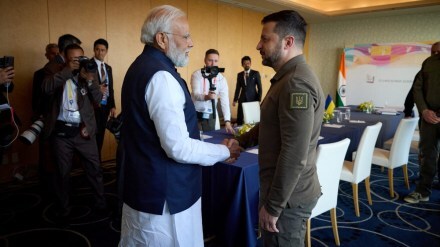Prime Minister Narendra Modi, currently visiting Poland, is set to travel to Ukraine on Friday, August 23. This visit, lasting half a day, will mark the first time an Indian Prime Minister has visited Ukraine since its independence following the Soviet Union’s collapse in 1991.
Instead of flying, Modi will take “Train Force One,” a luxury Polish train, to Kyiv on August 23. The visit is expected to last around seven hours, with nearly 10 hours spent traveling by train.
PM Modi will depart for the war-torn Ukrainian capital on Thursday evening. The extended train journey is necessary because all Ukrainian airports are closed due to the Russia-Ukraine war, making train travel the safest option.
All about “Train Force One”
This train has previously transported leaders such as U.S. President Joe Biden and French President Emmanuel Macron during their visits to Kyiv. Ukrainian President Volodymyr Zelenskyy also uses this luxury train for international trips.
“Train Force One” is equipped with advanced security measures, including armored windows, secure communication systems, surveillance systems, and a dedicated security team, ensuring the safety of its VIP passengers.
Originally built in 2014 for tourists in Crimea, the train boasts a modern, luxurious interior, resembling a high-end hotel on wheels, complete with a large meeting table, plush sofa, wall-mounted TV, and sleeping arrangements.
PM Modi to meet President Zelensky
During his visit, PM Modi will meet with President Volodymyr Zelenskyy. This visit to Kyiv comes nearly six weeks after his high-profile trip to Moscow and meeting with Russian President Vladimir Putin, which drew criticism from the U.S. and some Western allies. PM Modi, who accepted President Zelenskyy’s invitation to visit Ukraine, stated that he would share perspectives on peacefully resolving the ongoing conflict.
The primary focus of Modi’s visit is to strengthen bilateral relations and explore ways to achieve peaceful conflict resolution. Discussions with President Zelenskyy are expected to cover various topics, including agriculture, infrastructure, pharmaceuticals, education, and defense.
